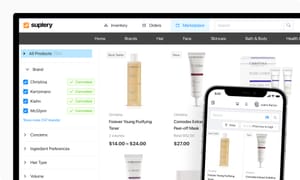How to open a barbershop in 2025 | The insider's guide
Do you intend to open a barbershop in 2025? Do you want to know how to succeed despite the difficulties of working in such a cutthroat field? Look no further!
This article will be your simple step-by-step guide on how to open a barbershop, backed by practical advice. We'll talk about everything that's important, from understanding the market and securing funding to hiring the right team and coming up with a business plan.
So, whether you're an experienced barber or a first-time entrepreneur, this guide will provide you with all the information on how to open up a barbershop and thrive in 2025.
How to open a barbershop business step by step
Opening a barbershop business can be a rewarding endeavor for those passionate about providing grooming services. Initiating this venture requires careful planning, adherence to regulations, securing funds, and a deep understanding of the industry and market dynamics. Follow these step-by-step guidelines to efficiently navigate through the process of establishing your own successful barbershop business, turning your vision into a lucrative reality.
Build your salon empire today!
Want to dominate the beauty industry? Grab our beauty salon business plan to unlock a powerful strategy that transforms your dream salon into a thriving reality. Download now — take the first step!
Oh no! We couldn’t subscribe you ☹️
Done! We've sent a link to your Email 📨
1. Market research for the create of a barbershop marketing strategy
First of all, before you start a barbershop, it's essential to learn and understand the local market and competition. This entails studying the local audience's interests, lifestyles, and socioeconomic status as well as examining the kinds of services and goods that are in demand. Additionally, you must research businesses that are already active in the market. By doing this, you can put your barbershop in a better position to serve the needs of your clients and differentiate yourself from the competition.
Here's how to go about it:
- Analyze the industry. You can start by gathering information about the local barbershop industry in general. This can include looking at statistics on the number of barbershops in the area, the types of services offered, and the prices charged. Additionally, you can research industry trends and forecast for the future. This will provide you with a high-level understanding of how to open a barber shop with a high chance of success.
- Understand the local competition. The most obvious step is visiting other barbershops in the area. Note the types of services offered, the prices charged, and the atmosphere of each barber shop you visit. Additionally, you can research the competition online. Look at their websites and social media accounts to gather more information, such as communication style and customer feedback. It may help you understand the landscape and potentially profitable niche to occupy.
- Learning the local customer demographic. Look at the age, gender, income, and lifestyle of local barbershop visitors and consider their preferences and needs. Additionally, you can conduct surveys or focus groups to gather more information. At this stage, you’ll be able to identify your own target audience — preferably the one that is present in your area.
- Use online research tools. Complete this stage of your research with the help of online tools such as Google Maps, Google Trends, and Google Analytics. They can give you more information on the local market, competition, and target demographic.
- Form a concept. Based on all of the above, create a concept of your future barbershop. Consider your chosen target audience, the niche you want to occupy, the desired pricing level, and style.
Give yourself enough time to research the market, learn about the competition in the area, and figure out who your target customers will be. As s result, the decisions you make about how to open a barbershop will be well-informed. It will be a good foundation for your future success.
After you have formed a clear vision, it’s time to go to the next step and think about the more practical side of the matter.
2. Creating a barbershop business plan
A barbershop business plan is a detailed document that explains the business's goals, strategies, and projected finances. It serves as a roadmap for the company's growth, helping the barbershop owner form the right strategies and tactics and make the right decisions. Also, a business plan is crucial for anyone who wants to raise funds from investors.
The US Small Business Administration found that those small business owners who had written a business plan had a higher chance of success. Another study by the Kauffman Foundation showed that entrepreneurs who wrote a business plan were 16% more likely to build a prospering business. That is why it is crucial to pay attention and follow the next steps to create a barbershop business plan before starting this business:
- Define your business model. Decide on the services you will offer, the pricing structure, and how you will generate revenue.
- Create a financial plan. Estimate start-up costs, projected income, business expenses, and projected profits.
- Develop a marketing strategy. Identify the best ways to promote your business, including online and offline marketing methods.
- Create a management plan. Outline the roles and responsibilities of everyone involved in the business, including yourself.
- Draft the plan. Organize your research into a formal document. It should include a summary, company description, industry analysis, target market, competitive analysis, management, and business structure, marketing and sales strategies, funding requirements, and financial projections.
- Implement and execute. Use your business plan as a guide to launch and grow your barbershop business. Be prepared to adjust your plan as needed based on actual results and market changes.
With a solid business plan in place, you will be well on your way to achieving your goals for your new barbershop.
3. Obtaining a barbershop business license
As a regulated service in the US, opening up a barbershop necessitates a business license. This means that there are regulations, and you cannot simply own a barbershop. The license makes sure that barbers follow all health and safety rules, as well as any local laws or ordinances that apply. It also helps prevent risks that may come with barbering, like the spread of diseases. An additional reason for requiring a license is to show that the barbershop has been through and passed all required inspections and tests.
Here are the steps to get a license:
- Determine the type of barbershop license you need. Depending on the specifics of your business and your state regulations, you may need a Master Barber license, a Barber Shop Operator’s license, a Barber Teacher’s license, or a Barber and Cosmetology license.
- Research your state’s requirements and regulations. Take the time to become familiar with the rules, regulations, and other requirements in your state. Make sure you understand which licenses you will need and what qualifications you must meet in order to be eligible.
- Submit your application. The application process for barbershop licenses typically involves a few simple steps: filling out an application form, submitting proof of qualifications and experience, and paying a fee.
- Attend a required training or certification program. In some states, you will need to complete a barbershop training program approved by the state before you can be licensed.
- Take the licensing exam. Depending on the state, barbershop owners may need to take a written or practical examination in order to be licensed.
- Get your license. After passing the exam, your license will be issued by the state. You will need to keep it current by renewing it as necessary.
Once you've finished these, you'll be ready to run your barbershop legally as a business.
4. Securing Funding
The next step on "how to start a barbershop business" is to find a way to finance the project, and that can be challenging. However, there are a number of ways to pay for the expenses of opening a barbershop:
- Traditional loans, such as a Small Business Administration (SBA) loan or a bank loan, can be a good option for your new barbershop. These loans typically have lower interest rates than other types of funding, and they may be easier to obtain if you have a good credit history.
- Investors. Another option for securing funding for your new barber shop business is to seek out investors. This could be angel investors, venture capitalists, or other people or companies who may be interested in your business.
- Personal savings. Using your personal savings to fund your barbershop can be a good option, especially if you don't want to take on debt. It can also be a good idea to have a savings plan in place before starting a business to make sure you have enough funds to cover unexpected costs.
- Small business grants. Look for the ones that are available for new businesses, such as the ones provided by the government or non-profit organizations.
- Family and friends. Asking your close people to invest in your new business or give you a loan may often be easier and more beneficial than any other option.
By considering all of your financing choices, you can determine which is most suitable for your barbershop startup. Financing can be a difficult issue, so you should get a head start and be prepared to present a thorough business plan and realistic financial projections.
5. Choosing a location
Once you have the financial aspect in place, the next thing on your “how to open a barbershop” checklist is finding a proper location. For a barbershop, it can make it or break it, so let’s see the most important factors to consider:
- Foot traffic. It’s always better to look for a location with high foot traffic, such as a busy street or shopping center. This can help attract customers to your barbershop with no effort and increase the chances of walk-in business.
- Parking. Make sure the location has ample parking available for customers. This can make it easier for customers to access your barber shop and may increase the likelihood that they will return in the future.
- Visibility. Look for a place with good visibility, such as one that is easily seen from the street. This can help attract customers who may be passing by.
- Competition. Look for a location that is not too close to other barbershops so that they don’t steal customers from you.
- Demographics. Look for a location that is in a neighborhood with a demographic that matches your target customer base.
- Rent. Look for a place that is affordable, and that has a reasonable rent.
- Zoning. Make sure the location is zoned for a barbershop and that it meets all local regulations and local laws.
By thinking about these things, you can choose a location for your barbershop that will attract customers and make it more likely to be successful.
And finally, the next step is to implement your ideas in real life.
6. Designing and building your barbershop
For many business owners, this is one of the most exciting but also challenging steps in starting a barbershop, with lots of details to track. And here’s how to solve this puzzle:
- Style. Define the style of your barbershop, whether it's traditional, modern, or a mix of both. This will help you create a consistent aesthetic and make sure that all of your equipment and furnishings align with your concept.
- Layout. Plan the layout of your barbershop based on the flow of customers and the positioning of equipment and furniture. You can use software like AutoCAD or Sketchup to create a layout on your own or together with your designer.
- Lighting. Lighting can have a significant impact on the atmosphere of your whole barbershop. Consider using a combination of natural and artificial lighting to create a comfortable and inviting atmosphere.
- Color scheme. Choose a color scheme that aligns with your overall design concept. You can use colors that reflect the style of your barber shop, whether it's traditional or modern.
- Equipment and Furnishings. Barber chairs, mirrors, shampoo bowls, workstations, storage — everything should align with your overall design concept. It's important to choose equipment and furnishings that are of good quality and that will last for a long time.
- Finishes. Consider the finishes of your equipment and furnishings, such as metal, wood, or leather. These finishes can help to create a cohesive aesthetic and add to the overall style of your barbershop.
- Branding. Incorporate your branding elements into the design of your barbershop. This can be done by using your logo colors, fonts, and imagery to make it consistent with your branding.
- Functionality. Make sure that the design of your barber shop not only looks good but also serves its intended function. The layout and equipment should make the barbershop comfortable for customers, and also, they should be easy to use and maintain.
By following these tips, you can create a design concept and layout for your new barbershop that is both visually appealing and functional.
7. Staffing
After you’ve got a proper location for your future barbershop, hiring the right team is the next crucial thing to manage when you are starting a barbershop.
And here’s how you can approach the whole process:
- Job roles. First and foremost, it is important to clearly define the job roles and responsibilities of the people you need to hire. This will help you identify the specific skills and qualifications required for the positions. The essential job roles for a barbershop include barbers, hair stylists, and a receptionist. Additionally, you may want to have a shampoo assistant, colorists, apprentices, cleaners, and other staff members.
- Job listings. Create detailed job listings that include the job title, responsibilities, qualifications, and other important information. Post the listings on job boards, such as Indeed, Glassdoor, and Monster. You may also place your jobs on social media such as LinkedIn, professional forums, and any other platforms where potential candidates are likely to see them.
- Resumes and cover letters. Review resumes and cover letters of all the applicants and shortlist those who meet the qualifications and requirements for the job.
- Initial interviews. Conduct initial interviews with the shortlisted applicants to get a better understanding of their qualifications, work experience, and skills. Use this opportunity to ask about their availability, salary expectations, and any other relevant information.
- Reference and background checks. Before making a job offer, conduct reference and background checks for the top candidates. This will help you to verify their qualifications and work experience and ensure that they have a good employment history.
- Job offers. Once you have completed the reference and background checks, make job offers to the top candidates. Be sure to provide them with all the necessary information, such as the job title, salary, benefits, and start date.
- Onboarding. Once the new staff members have accepted the job offer, begin the onboarding process. This includes providing training, orientation, and any other necessary information to help the new staff members become familiar with the company policies, procedures, and culture.
8. Marketing and advertising
Even before you open a barbershop, you need to come up with a marketing plan to bring in customers and get the word out about your new barbershop.
Here are some tips that include both online and offline tactics:
- Online presence. To succeed in 2025, you’ll need to develop a strong online presence. First of all, you’ll need to create a website and social media accounts on Instagram, Twitter, TikTok, Pinterest, and other relevant platforms. Use these platforms to share information about your barbershop: services, prices, and special promotions.
- Search engine optimization. Optimize your barber shop website for Google by using keywords related to your barbershop, such as "barbershop," "haircuts," and "men's grooming." This will help your website appear higher in search engine results and make it more likely that potential customers will find your barbershop.
- Online advertising. Utilize online advertising platforms such as Google AdWords, Facebook Ads, or social media ads to target specific demographics and promote your barbershop.
- Email marketing. Collect email addresses from customers and send them updates about your barbershop, such as new services or promotions.
- Influencer marketing. Reach out to social media influencers in your local area and ask them to share information about your barbershop with their followers. You can find influencers directly on social media or use specialized platforms like Influencer.co or Upfluence to make it in automated way.
- Local events. Participate in local events and fairs to promote your barbershop and attract new customers.
- Flyers and brochures. Create flyers and brochures that describe your barbershop's services and pricing. Distribute them in the local area or in nearby businesses, or post them in community boards.
- Referral program. Encourage current customers to refer their friends and family to your barbershop by offering a referral discount or other incentives.
- Grand opening event. Plan a grand opening event to attract new customers and generate buzz about your barbershop.
By implementing these tactics, you can develop a comprehensive marketing strategy that will help you attract customers and promote your newly-opened barbershop.
It's important to remember that a successful marketing strategy should be tailored to the needs and preferences of your target audience and should be flexible enough to change with the market.
9. Operating and managing
Having a successful barbershop is impossible without ensuring smooth operations. It will help you not only overcome possible crises but also make sure your customers’ regular experience runs in a smooth and delightful way.
Of course, managing the operations of a barbershop requires a significant amount of discipline and attention to detail. This includes setting up different kinds of systems, including:
- Schedule. Use scheduling software that allows clients to book appointments online and sends reminders to both the client and the barber. This will help to reduce no-shows and make the scheduling process more efficient.
- Purchases and Inventory list management. Keep track of the products used in the shop, such as hair care products, razors, and other supplies, and purchase them from suppliers on time. Use Suplery inventory management software to not only track stock levels, reorder points, and vendor information but also get seamless access to the best companies and brands on the market.
- Financial tracking. Use accounting software or hire an accountant to keep track of income and expenses, including payroll, rent, and other bills. Create a budget and regularly review financial statements to ensure the business is on track.
- Hiring and training. Hire a team of experienced barbers and provide training on the specific services offered by the shop, as well as customer service and sales techniques. This can also be accomplished by using recruiting software or by building your own documentation-based solution.
- Customer service. Encourage customers to provide feedback and respond to any complaints in a timely and professional manner and use feedback to improve the services offered and customer experience. This can be done in a manual mode or by using a customer feedback software solution.
Most of the reasons for the number of clients or stars in reviews are hidden in the business processes. Tune them well, make sure your clients are satisfied with every experience, and you will get your share of the market, even if the competition is really tough.
How much money do you need to start a barbershop?
How much does it cost to start a barbershop? Depending on the size and location, you may be able to get started with just a few chairs and some basic equipment. For a more elaborate setup, you could end up spending anywhere from $10,000 to $50,000 for things like barber chairs, lighting, mirrors, and other furnishings.
In addition to equipment costs, you'll also need to consider the cost of supplies. Supplies such as razors, scissors, combs, and clippers can add up quickly. You should also set aside money for marketing, advertising, and insurance.
Finally, you may need to consider hiring employees. Depending on the number of barbers you'll need and the type of salaries you'll offer, you may be looking at an additional $30,000 or more.
All in all, the amount of money needed to start a barbershop can range from several thousand to several tens of thousands of dollars.
How to open up a barbershop with $20,000?
Opening a barber shop with just $20,000 can be an uneasy task, but it is possible with some strategic planning.
You may be able to get a discounted rate on some items if you shop around and look for deals. If you are able to save on rent or equipment, you can use the extra funds to purchase quality products to provide better services. Once you have the shop up and running, you will need to be creative with marketing and advertising in order to attract customers.
Having a $20,000 budget is enough to starting a barber shop, but you need to be strategic with your spending and business model to make it a successful business.
How to interview your potential team members?
One more thing to think about is how to assess and sort through applicants, which becomes especially important when there are many of them. While much is dependent on the specifics of your barbershop's concept, style, and proficiency level, there are some universals to keep in mind:
- Experience and skills. Look for barbers, stylists, and other staff members who have experience and skills in the industry. This includes experience cutting and styling hair, as well as knowledge of the latest trends and techniques.
- Customer service. Look for staff members who have excellent customer service skills and are able to provide a welcoming and comfortable experience for customers.
- Professionalism. Look for people whose professional level is proven by experience and certificates.
- Cultural fit. Look for staff members who align with the culture and values of your barbershop.
You can set yourself up for success by hiring people with relevant experience, knowledge, and professionalism, as well as good customer service skills and a personality that fits with the culture of your barbershop. In addition, investing in your staff through training and ongoing support is a good way to make sure they always do a good job.
Conclusion
So, what do you need to open a barber shop? It’s not an easy task that requires a significant amount of planning and preparation — but it also may be a rewarding enterprise.
By understanding the market, securing funding, choosing the right location, and building a skilled team of staff members, you can set yourself up for success. Also, if you use Suplery as your main tool for buying products and managing your inventory, you'll have a lot less trouble with products that are out of stock and suppliers who refuse to sell to you.
Stay ahead in beauty business
Feast on the latest marketing techniques and business tips. Elevate your game with every read!
Unveil secrets The latest articles and industry insights delivered to your inbox
The latest articles and industry insights delivered to your inbox
Subscribe to receive a monthly digest of our most valuable resources like blog posts, whitepapers, and guides.
Oh no! We couldn’t subscribe you ☹️
Done! You've subscribed 💛
Unsubscribe anytime. Your data is stored for business-to-business communication purposes. See our Privacy policy.
Frequently asked questions
How to open a barbershop in 2023?
To open a barbershop in 2023, you will need to develop a business plan, secure funding, obtain necessary business licenses and permits, find a suitable location, purchase equipment and supplies, hire staff, promote your business, and comply with all local, state, and federal laws and regulations. It's advisable to consult with a lawyer and a financial advisor to ensure compliance and better chances of success.
Is owning a barber shop profitable in 2023?
It's difficult to say if owning a barbershop will be profitable in 2023 without more specific information about the location and business plan. The local economy, competition, and good management are all things that can affect how profitable a barbershop is. But the hair-cutting business is expected to keep growing over the next few years as the need for personal grooming services grows. To increase the chances of success, it's important to do a lot of research on the market and have a solid business plan.
What are the costs involved in starting a barbershop?
The costs involved in starting a barbershop include the cost of licenses and permits, location, equipment and supplies, staff, and promotion. Also, recurring costs like rent, utilities, inventory, and employee salaries will need to be taken into account. The cost may vary depending on the location and scale of the business. It's important to do a lot of research on the market and have a solid business plan with financial projections so that you can get a better idea of the costs.
What do you need to open a barbershop?
To open a barbershop, you will need a business plan, money, business licenses and permits, a good location, equipment and supplies, staff, and advertising. In addition, you'll have to follow all local, state, and federal laws and rules. It's also important to conduct thorough market research and have a solid business plan that includes financial projections to increase the chances of success.
How to own a barbershop?
Owning a barbershop involves careful preparation, dedication, and planning. The first step is to decide on a concept and develop a business plan. This means doing research on the local market, deciding which services to offer, setting prices, and getting licenses and permits. Next, select a suitable location with ample space and good visibility. Planning out the interior layout, furniture, and equipment should also be taken into consideration. Once the shop is up and running, hiring professionals and staff with the right skills and knowledge is essential. Marketing the business, developing relationships with customers, and keeping up with industry trends is also necessary to ensure long-term success.
Last updated on Mar 04, 2023
“What Changed” in this article? Everything. It's packed with the latest findings, the ripest data, and a fresh analysis you won't find anywhere else.
Please share this post
Unlock the secrets to beauty business success!
Join our community for insider tips on product management, marketing, sales and client attraction. Elevate your business with expert insights delivered straight to your inbox.
Oh no! We couldn’t subscribe you ☹️
Done! You've subscribed 💛
Trusted by the best in the beauty industry.
Transform your beauty business with Suplery!
Already enjoying our expert tips? Take the next step and join Suplery to revolutionize your business operations.
Huge range of professional products
One-click checkout after first order
Automated predictive orders
Seamless inventory management
From words to action
Start working with Suplery and explore all the tools and services you need to expand your business
Get started with Suplery24/7 Support
Secure payments
Designed by industry’s experts




